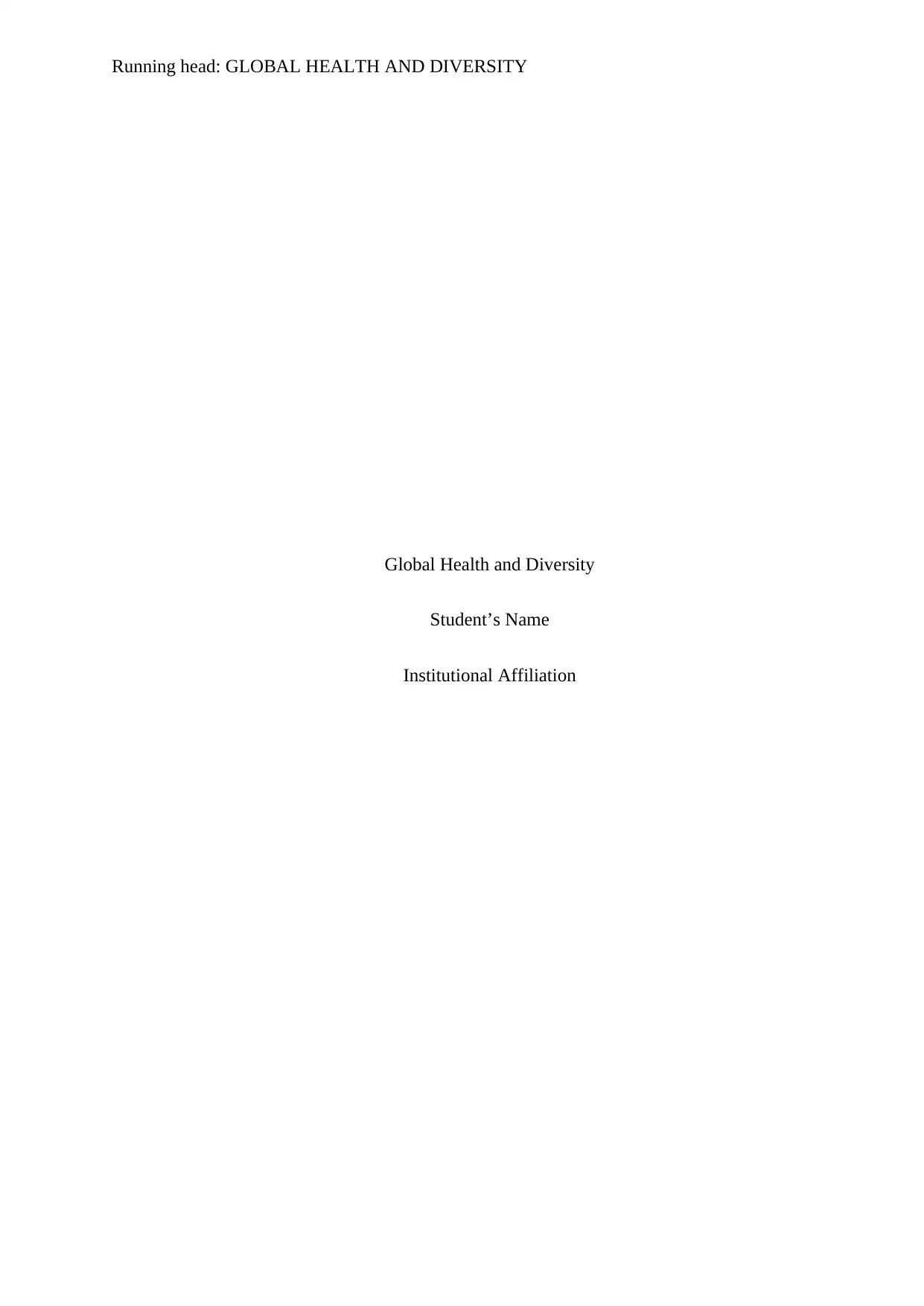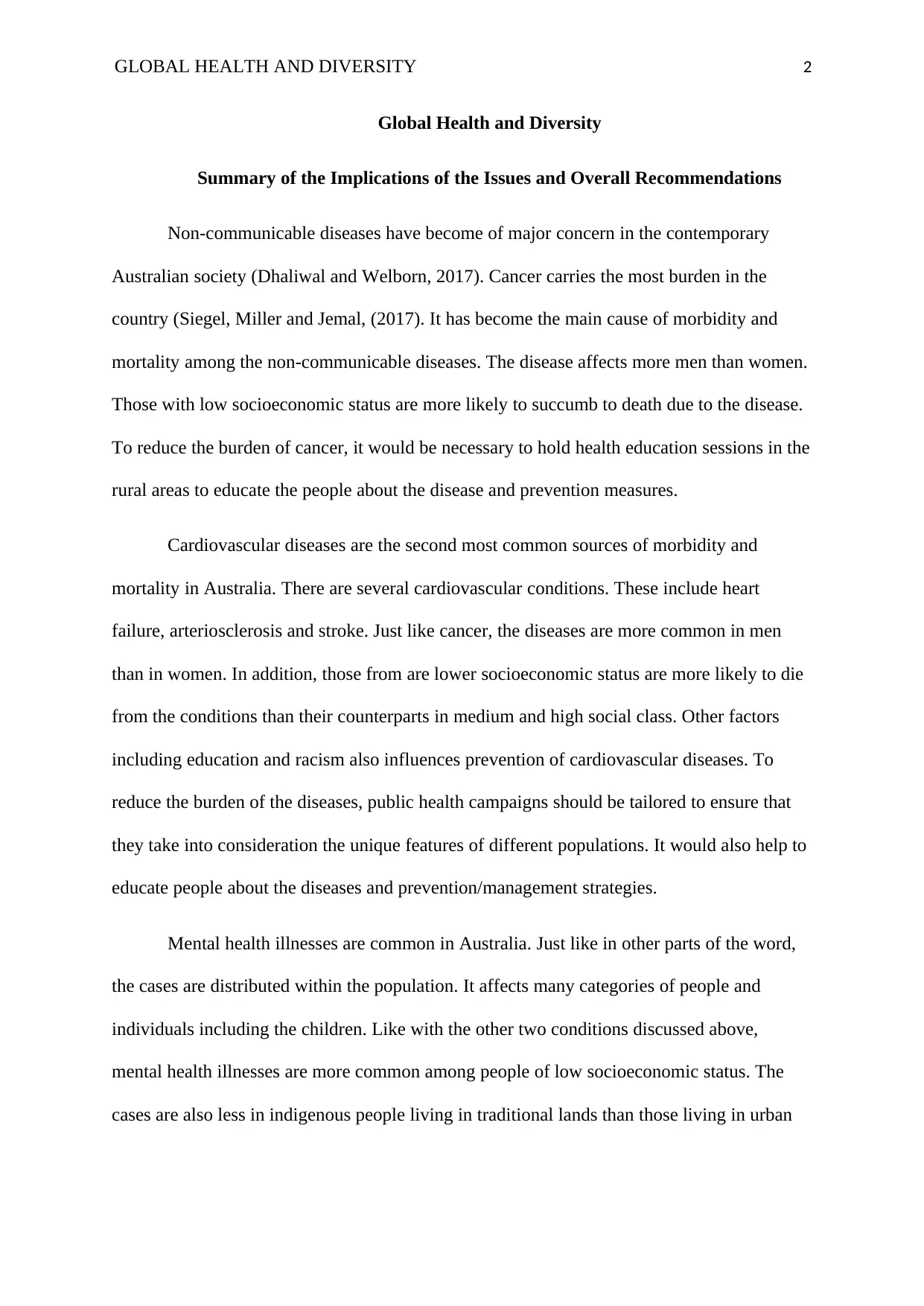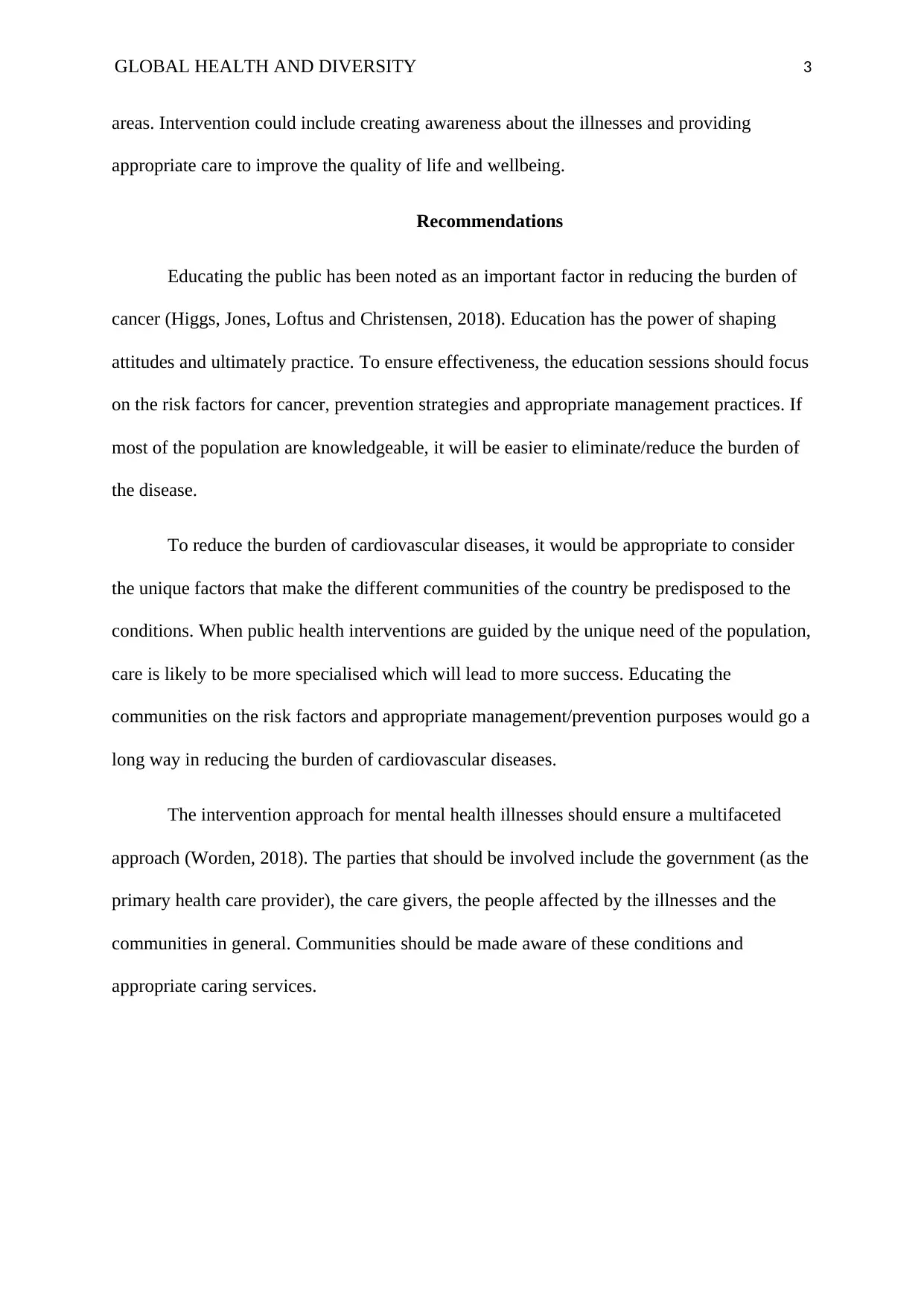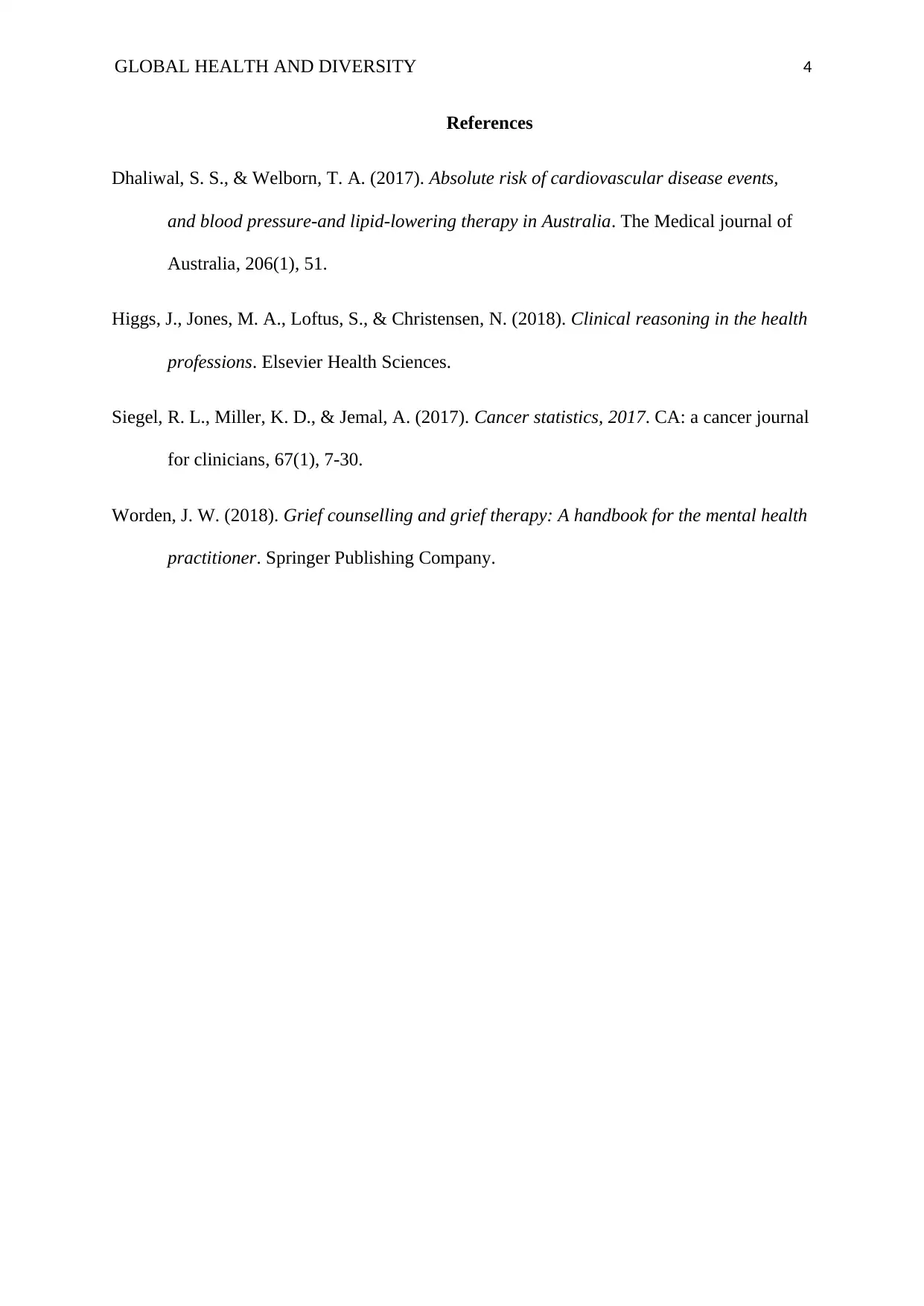Analyzing Global Health and Diversity: Implications & Recommendations
VerifiedAdded on 2023/06/03
|4
|754
|163
Report
AI Summary
This report summarizes the implications of major health issues in Australia, including cancer, cardiovascular diseases, and mental health illnesses, and provides overall recommendations for global health practitioners. It highlights that non-communicable diseases are a major concern, with cancer carrying the highest burden, followed by cardiovascular diseases and mental health issues. The report emphasizes that these conditions disproportionately affect individuals with low socioeconomic status. Recommendations include public health education focusing on risk factors and prevention strategies for cancer and cardiovascular diseases, as well as a multifaceted approach involving government, caregivers, affected individuals, and communities for mental health illnesses. Tailoring public health interventions to address the unique needs of different populations is crucial for success. The report underscores the importance of raising awareness and providing appropriate care to improve the quality of life and wellbeing.
1 out of 4











![[object Object]](/_next/static/media/star-bottom.7253800d.svg)